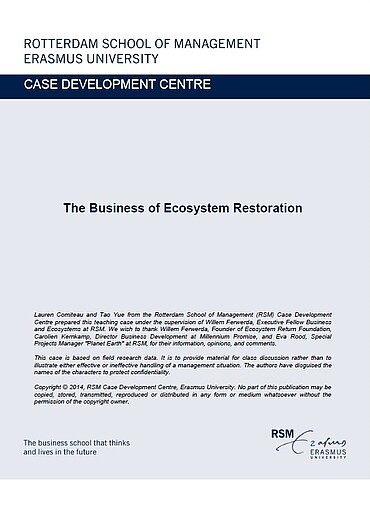Citation Note
Based on field research; 9 pages.
Follow the 'handle' link to access the Case Study on RePub.
For EUR staff members: the Teaching Note and Case Supplement are available on request, you can contact us at rsm.nl/cdc/contact/
For external users: follow the link to purchase the Case Study, the Teaching Note and the Case Supplement.
Objective
This case helps students to understand that healthy ecosystems are at the heart of a sound and sustainable economy and restoring damaged ecosystems is an essential way to keep the economy functional for future generation. Furthermore, the case challenges the conventional notion of Return On Investment (ROI). It makes students see that in a responsible and sustainable business, ROI includes the following four aspects: 1. Hard financial returns. 2. Soft financial returns (recognition and reputation). 3. Social return (local employment and societal development). 4. Spiritual return (an improved awareness of sustainability).
Abstract
There are some two billion hectares of severely depleted land on Earth, some 20 percent of the planet, due to decades of agro-farming, deforestation, overfishing and over-grazing. Ecologist and former IUCN NL director Willem Ferwerda wants to reclaim them a few hundred thousand hectors at a time, saying if we don’t act now, the world is doomed. He has created the Ecosystem Return Foundation to match businesses with local partners in restoration projects, believing that without business involvement, it will be impossible to scale up the world’s current small-time programs. He is already working in Poland, Spain and the Galapagos. And in Senegal, Ferwerda is hoping that collaboration with the Millennium Villages Project not only helps meet the Millennium Development Goals, but attracts private investors and businesses to scale-up existing successful projects in organic farming and reforestation. But restoration is a long-term investment, and Ferwerda’s biggest challenge remains: How do you convince businesses to invest in projects that likely won’t see a return for 20 years?
